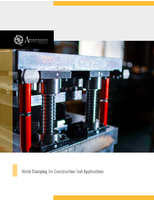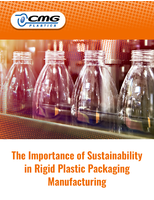PPI & OMS Help Insulated Panel Manufacturers Use Less Energy & Chemicals
Share:

PU Panel Manufacturers Report Chemical Cost Reductions of Up to 10%
LATROBE, PA. - OMS Group is helping sandwich panel manufacturers save hundreds of thousands of dollars per year by installing more energy- and chemical-efficient technology.
Manufacturers of flexible-faced, insulated roofing panels report a 10% reduction in chemical costs and significant maintenance and energy savings after upgrading existing production lines to new high-speed OMS laminators, said Mark Clark, general manager of Polyurethane Process Industries. PPI is the exclusive distributor of OMS equipment in the United States.
"Several US and European panel manufactures replaced their old mix heads and chain-driven laminators with new OMS high-pressure mix heads, high-pressure heat exchangers, and gear-driven double-belt conveyors," Clark said. "The whole OMS laminator is fully enclosed to inhibit heat loss during the curing process. The conveyor is also chainless, which means significantly lower maintenance cost and less friction, so OMS can use smaller drive motors that use less energy."
Clark said other manufacturers of continuous flexible- and rigid-faced sandwich panels should realize similar savings with the same OMS mix head and laminator upgrades, which include:
1) A lay-down area where three self-cleaning, recirculating mix heads distribute multiple streams of reacting foam onto a flexible or rigid substrate. These high-pressure mix heads have pneumatically controlled nozzles that automatically adjust to maintain a setpoint pressure. The mix heads improve chemical utilization by delivering better control over chemical temperature; pouring pressure; dynamic blending of variable amounts of polyol, catalyst, blowing agent and other additives; impingement mixing; and foam distribution.
2) High-pressure heat exchangers near the mix heads to more accurately control chemical temperature where it is needed.
3) A double-belt conveyor that precisely maintains the required dimension of the finished panel as it transports the substrate and foam core through the curing process. Automatic adjustment of the upper belt position precisely maintains or varies panel thickness without shutting down the line to insert calibration spacers. Hot air circulates within the conveyor, which is enclosed within a thermally insulated tunnel to conserve heat and energy.
"This technology is standard on OMS continuous panel lines," Clark said. "Any panel manufacturer should be able to realize substantial chemical, maintenance and and energy savings with this equipment. The new mix heads and high-pressure heat exchangers typically pay for themselves in a year by reducing the amount of scrap and chemicals used."
Lynn Haas of J.L. Haas Consulting agrees that OMS panel production technology offers significant opportunities for cost savings over equipment supplied by other manufacturers. Haas has more than 30 years experience working with and selecting equipment for insulated panel production systems.
"To maximize yield, the expanding chemicals should be distributed evenly over as much of the surface as possible," Haas said. Compared to a standard two-head system with manual high-pressure controls, the OMS three-mixhead system with pneumatic pressure control distributes a third more of well-mixed reacting chemical on the substrate.
"This improvement may increase chemical yield by 5% to 6% in 1-inch board and 1% to 2% in 2-inch board," Haas said. "Overall with an average product thickness of 2 inches and a wet density of 1.90 pcf, the savings on 100 million board feet could be in the range of $150,000 to $200,000."
OMS also uses high-pressure temperature control, high-pressure recycling and self-cleaning mix heads, all of which help produce higher quality foam, less scrap and less downtime for maintenance, Haas said. "Imagine cleaning the mix head once every 3 months," he said.
High-pressure heat exchangers installed close to the final mix point produces more uniform chemical reactivity, reducing over-pack and under-fill of the final product, Haas said. "High-pressure recycling can eliminate three to eight reject boards during start-up just by allowing the line to start with pre-determined temperature, blowing agent and catalyst levels," he said.
Panel manufacturers can cut costs even more with automatic adjustment of panel thickness, which is standard on the OMS laminator, Haas said. "Mechanical thickness adjustment has a major benefit over manual adjustment when it comes to reducing chemical usage, downtime for change-over and thickness errors due to incorrect spacer placement," he said.
Panel laminating systems that require an operator to stop the line to insert calibration spacers typically provide a minimum thickness adjustment of 1/32 of an inch, Haas said. This can waste a significant amount of chemical because panel thickness may actually vary from exactly right at the minimum specification to 0.03124 inch over the specified thickness.
For example, Haas explained, the actual thickness of a 2-inch panel could be, on average, 0.015 inch thicker than required. "You can easily waste 0.75% of your total chemical usage over a year. Each 100 million board feet produced, at $1.00 per pound of chemicals, would use as much as $120,000 more chemicals than needed," he said.
Motorized jackscrews on the OMS double-belt conveyor automatically adjust to maintain the panel thickness to the minimum specifications. "With automated thickness, in theory, you could start the day producing minimum thickness product and never stop the machine until that product is finished," Haas said. Not only can this save hundreds of thousands of dollars in chemicals, but product thickness changes during normal shutdowns can be made in two minutes or less, saving from three to six minutes for each product change, Haas said.
"During a 5-product shift, that is 15 to 30 minutes more production," Haas said. "At 30 minutes, change-over time represents 6% excess downtime in an 8-hour day."
Automatic thickness adjustment also eliminates "spacer errors," which can cost $600 to $700 per occurrence, Haas said. "Several times a month during normal operation, an operator will inadvertently place the wrong set of spacers in one more positions. Each time this happens, there is an additional shutdown and reject product," Haas said. Missing and misplaced spacers also can cause significant damage to the laminator structure, resulting in large repair costs and downtime, he added.
Clark said there are other advantages built into OMS panel production technology. Dynamic mixing with high-pressure recycle allows you to change formula for product thickness, and it provides a better polyol/pentane mix, reducing the possibility of emulsion separation.
"You want the pentane dispersed evenly throughout the foam mixture, otherwise you could end up with blisters," Clark said.
Interest in producing insulated sandwich panels appears to be increasing as investors and manufacturers turn their attentions toward green products, Clark said.
"Recently, we've been pretty busy upgrading existing production lines," Clark said. "But we're also in the best position to help someone get started in the manufacturing of insulated panels of all types."
PPI supplies OMS equipment and helps design and install plants for the production of continuous and discontinous sandwich panels, including flexible substrate panels for roofing, cavity wall insulation and air conditioning ducts; rigid gypsum-, cement-, wood- and metal-faced panels for cold storage and construction applications; and sandwich panels made with PUR, PIR, phenolic resin, and pre-formed EPS or mineral fiber cores.
About Polyurethane Process Industries, LLC
PPI is the exclusive U.S. distributor of polyurethane foam equipment produced by Italian manufacturer OMS Group. The southwestern Pennsylvania sales and service company has provided high-quality, low-cost equipment, parts, repairs, service and engineering assistance to North American polyurethane manufacturers since 2004. The company was founded by Mark Clark, who spent nearly 20 years in the engineering, parts, service and sales departments of such major polyurethane equipment manufacturers as Cannon and Hennecke Machinery.
For more information contact:
Mark Clark, General Manager, Polyurethane Process Industries, LLC
Tel: (724) 459-4505; Cell: (724) 244-6698; Fax (724) 459-4507
Email: mclark@pu-process.com




